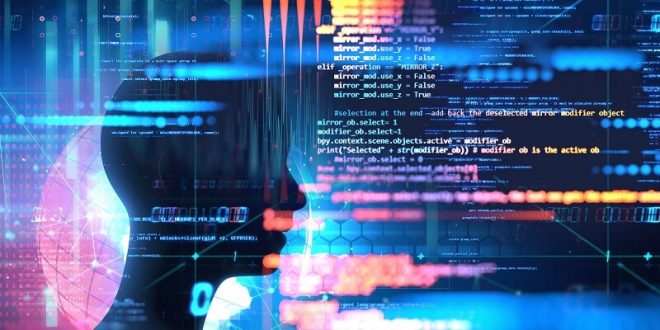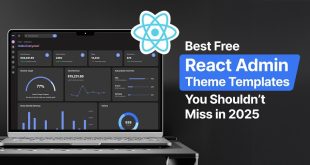Hello there, today in this blog post, we are going to discuss essential steps to master Python for machine learning in 2024. So keep reading.
The rapid evolution of Artificial Intelligence (AI) and Machine Learning (ML) has revolutionized the IT industry. Python is one of the most popular and powerful languages for developing AI and ML systems. In order to keep up with the trends, it is essential for programmers to have a good understanding of Python.
Before we discuss the essential steps, let’s have a quick overview of Python and how it is helpful in Machine Learning.
What is Python for Machine Learning?

Python is a powerful, intuitive programming language that is ideal for Machine Learning applications. With its extensive collection of modules, packages, libraries, and also frameworks, Python provides an easy-to-use platform for developing robust and powerful ML algorithms.
Python is an interpreted language, meaning it can analyze a program line-by-line. It makes it easier to debug, test, and modify code. As ML deals with complex algorithms, Python’s interpretability makes it a preferred language for developing ML applications. Additionally, Python contains an extensive library of algorithms and data structures, along with modules and packages that are designed to simplify Machine Learning tasks.
Moreover, Python is known for its versatility and is widely used for various ML applications. It makes the entire process of developing an ML application easier and faster. From data collection and preprocessing to model building and deployment, Python can handle these tasks with ease. It has also been used for developing various AI-based applications for consumer electronics, healthcare, finance, and other industries.
5 Essential Steps To Master Python For Machine Learning In 2023
This section discusses five essential steps you need to take in order to master Python for Machine Learning in 2023. So, let’s get started!
1. Understand the Basics of Python.
To get started with Python for ML, one must first understand the basics of the language. Python is an interpreted, high-level, general-purpose programming language with an easy-to-learn syntax, making it ideal for beginners. The fundamentals of Python are data types, variables, functions, packages, loops, arrays, data structures, vectors, and data frames.
An excellent way to get familiar with the language and its syntax is by reading tutorials and going through online courses. Numerous books, tutorials, and resources are available to help with Python basics.
2. Learn Python Libraries.
Upon gaining familiarity with the basics of Python, it is crucial to understand the available libraries and frameworks related to ML. Python has an extensive range of libraries and frameworks, such as NumPy, Pandas, Matplotlib, Seaborn, TensorFlow, Keras, Scikit-Learn, SciPy, and PyTorch, which can help in the development of ML applications. These libraries provide access to a variety of tools that help simplify and speed up ML tasks.
NumPy:
Numpy is an essential library for scientific computing in Python. It provides a multidimensional array object, high-level mathematical functions, Fourier transforms, and an effective C-API. It is used in data manipulation and analysis and to create complex scientific computations.
Pandas:
It is an open-source data analysis and manipulation library for Python that has become an essential tool for many Machine Learning applications. With the use of Scikit-Learn, Pandas can be used for supervised and unsupervised learning tasks. Also, it allows for loading data from various sources, preprocessing data, feature engineering and selection, and model-building and evaluation.
Matplotlib:
Matplotlib is a popular choice for creating visualizations in ML applications because it allows for easy integration of various data sources and helps quickly identify data patterns. It is an essential tool for data scientists to effectively and accurately visualize data and explore machine learning algorithms.
Seaborn:
By providing various plot types and sophisticated visualizations, Seaborn can assess the efficacy of ML models and identify possible shortcomings, allowing for better model selection. In this way, Seaborn makes an invaluable tool for developing ML solutions.
TensorFlow:
In machine learning, TensorFlow enables faster experimentation, easier prototyping, and production-level solutions. It is used to build and train ML models, as well as recognize patterns in data.
Keras:
It is a high-level neural networks API written in Python, which can run on top of other ML libraries. Keras is used to quickly and efficiently design, build, and train deep learning models.
Scikit-Learn:
Scikit-Learn is a Python library that provides a wide range of algorithms and tools to support the development of ML models. It is designed to be easy to use while providing powerful tools for data mining and analysis.
SciPy:
SciPy includes modules for numerical integrations, linear algebra, optimization, and statistics. It also provides access to sparse solvers and special functions. It is used to calculate numerical solutions to complex equations, optimize complex problems, and solve integration problems.
PyTorch:
PyTorch is an open-source library for deep learning that provides a comprehensive set of features, including automatic differentiation, dynamic neural networks, and support for many hardware platforms.
3. Get to Know ML Algorithms.
Once you get comfortable with Python libraries and frameworks, it is time to learn about ML algorithms. Algorithms are the basis for ML and AI. They include supervised learning algorithms like support vector machines, logistic regression, decision trees, and random forests, as well as unsupervised learning algorithms like clustering, association rule mining, and principal component analysis (PCA). Furthermore, there are other essential topics that are needed, such as ensemble techniques, recommendation systems, time series forecasting, and model deployment.
4. Implement Machine Learning Projects.
Once you have acquired knowledge about the basics of Python, ML libraries, and also ML algorithms; it is time to put everything into practice and implement ML projects. Projects are a great way to apply the knowledge you have gained so far and make use of the available Python libraries and frameworks. There are many open-source project ideas accessible on the web that can assist you in getting started with ML projects.
5. Continuous Learning.
Python and ML development is a continuous process, meaning there is always something new to learn. The best way to stay updated with the latest trends and technologies is to follow blogs, tutorials, webinars, podcasts, and other educational materials.
Besides this, you can pursue a professional machine learning course to learn about emerging trends and technologies, helping you stay ahead in the field. It encompasses the most critical tools, techniques, and concepts of Machine Learning with the assistance of hands-on demonstrations and projects.
Summing Up
Python for ML has become an essential requirement for any programmer who wants to make a mark in the IT industry. With the right resources, knowledge, and practice, it is possible to master Python for ML in 2023. Understanding the basics, learning the correct libraries and frameworks, gaining familiarity with the algorithms, implementing projects, and staying up to date with the trends.
Are you wondering where to master Python for ML that follows all the essential steps mentioned above? Worry not!
Great Learning’s world-class AI and ML courses will equip you with the skills and expertise necessary to stay on top of this rapidly evolving field. You’ll gain practical experience using state-of-the-art tools and techniques while keeping up with the most recent AI research, algorithms, and also applications. These courses are an excellent place to start; whether you want to pursue a career in AI or are just interested in keeping up with the most recent advancements.
Author Bio
Kanchanapally Swapnil Raju is a Technical Content Strategist at Great Learning who plans and constantly writes on cutting-edge technologies like Data Science, Artificial Intelligence, Software Engineering, and Cloud Computing. He has hands-on skills in MEAN Stack development and programming languages such as C, C++, and Java. He is a perpetual learner and has a hunger to explore new technologies, enhance writing skills, and guide others.
 free html design Free html design templates
free html design Free html design templates






